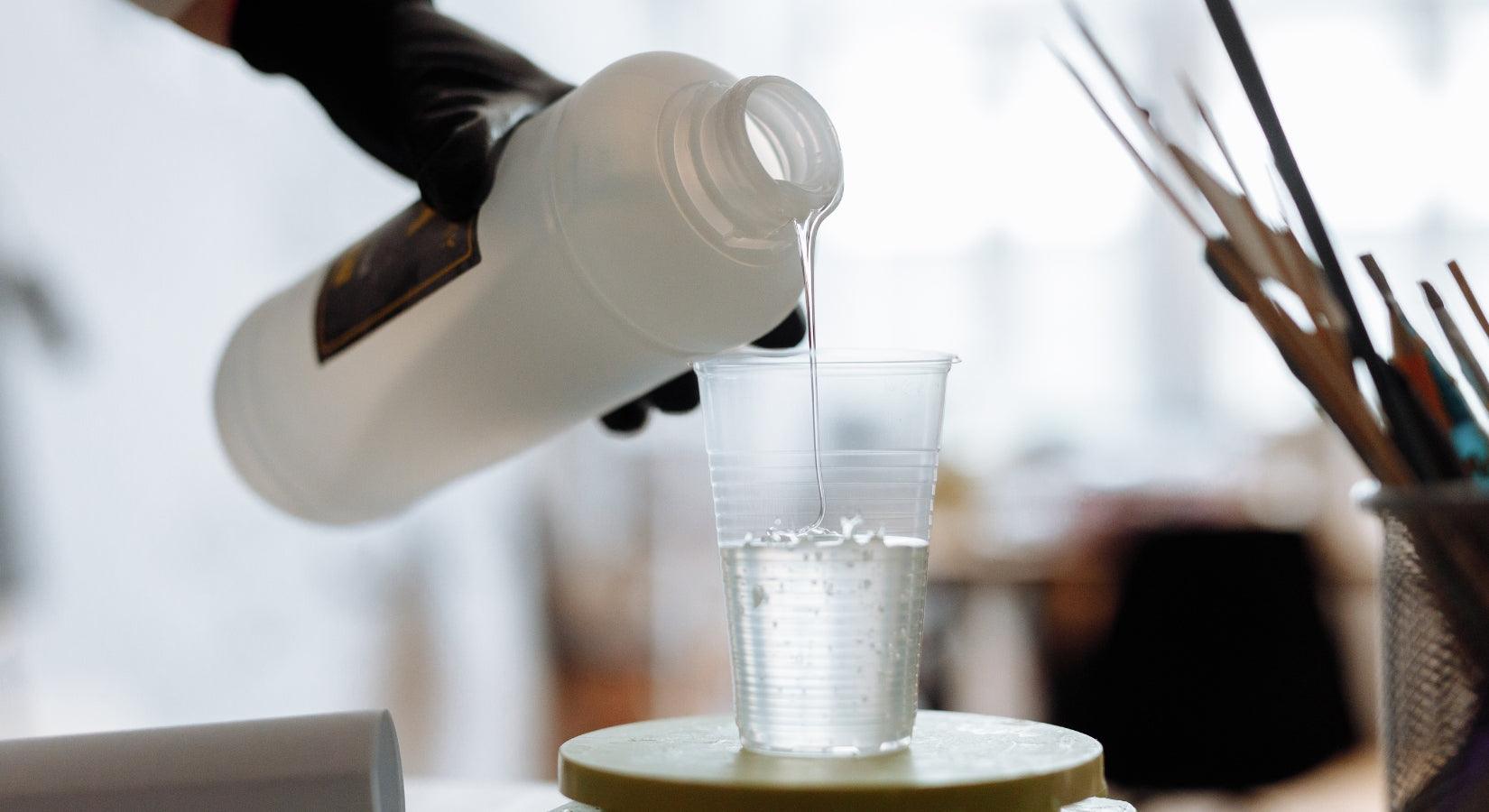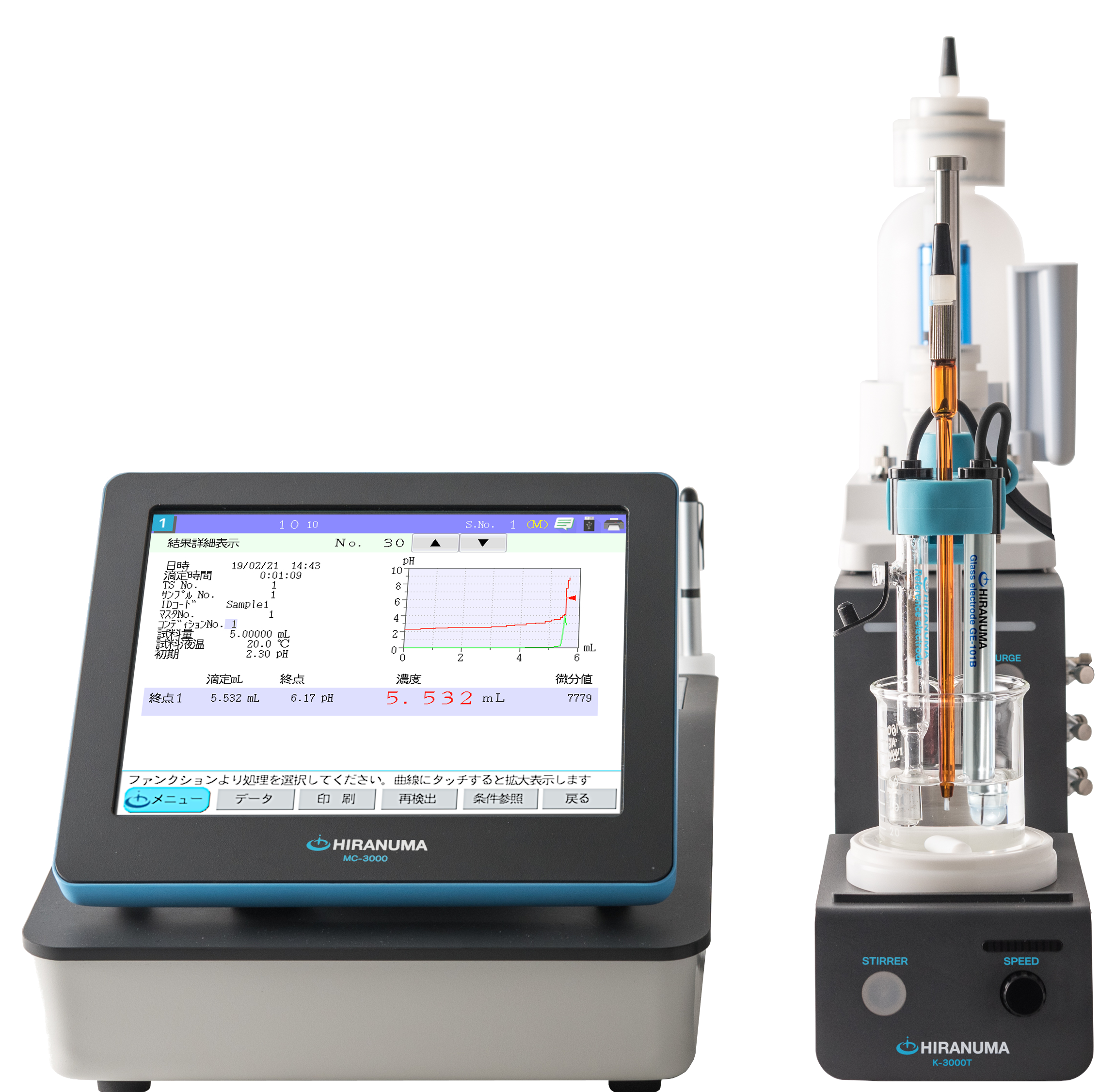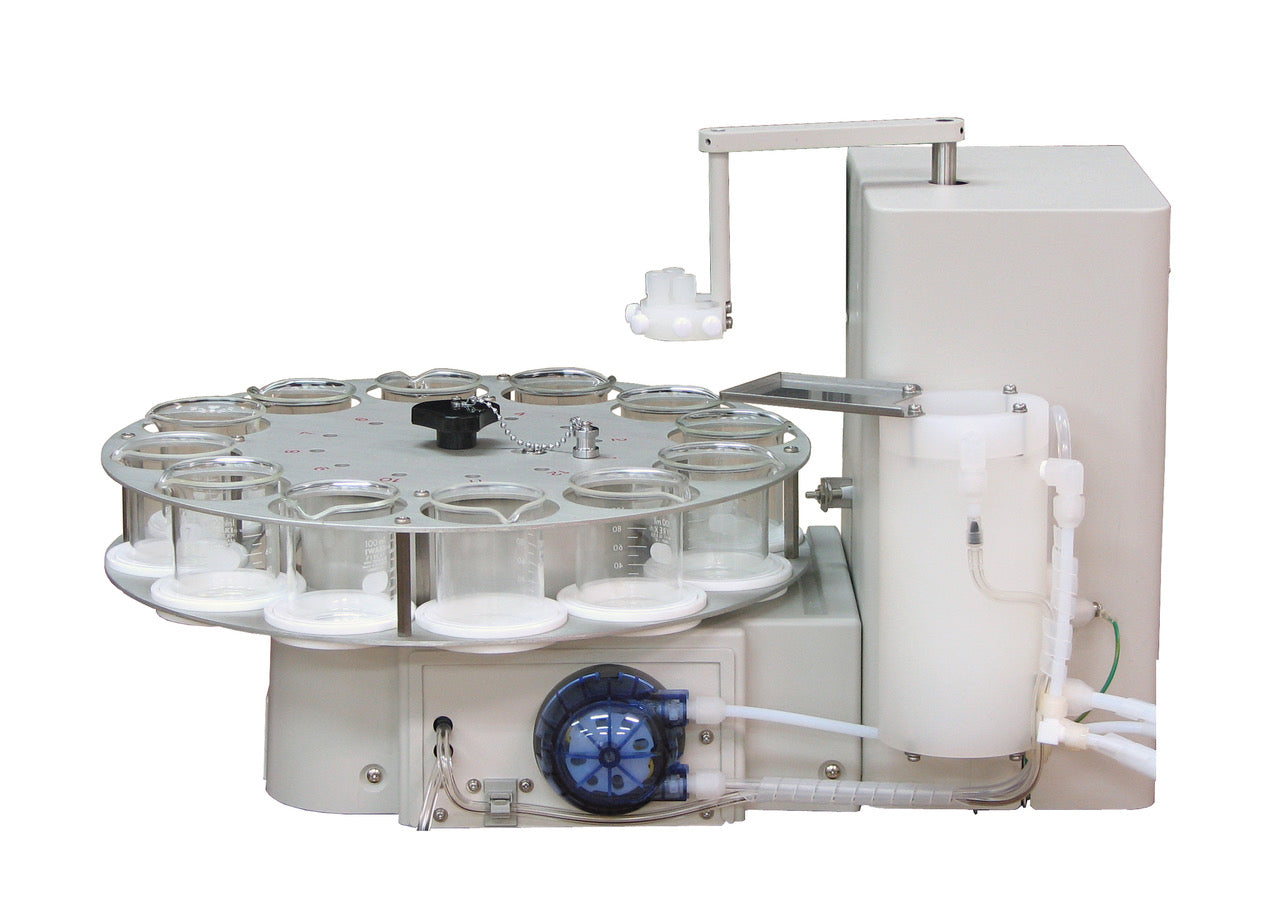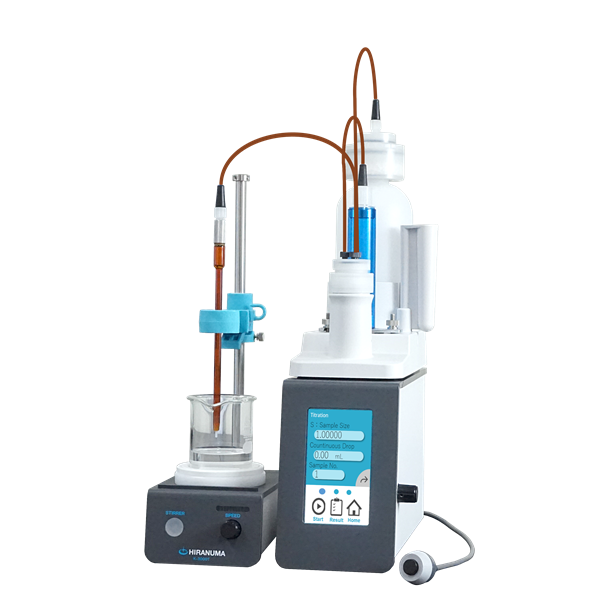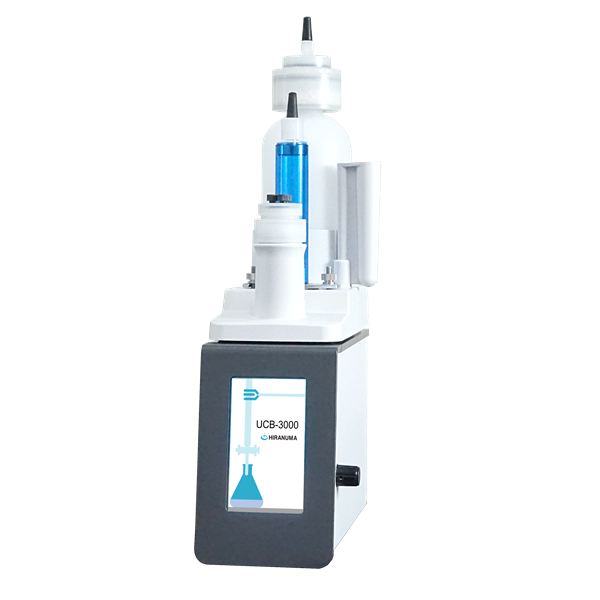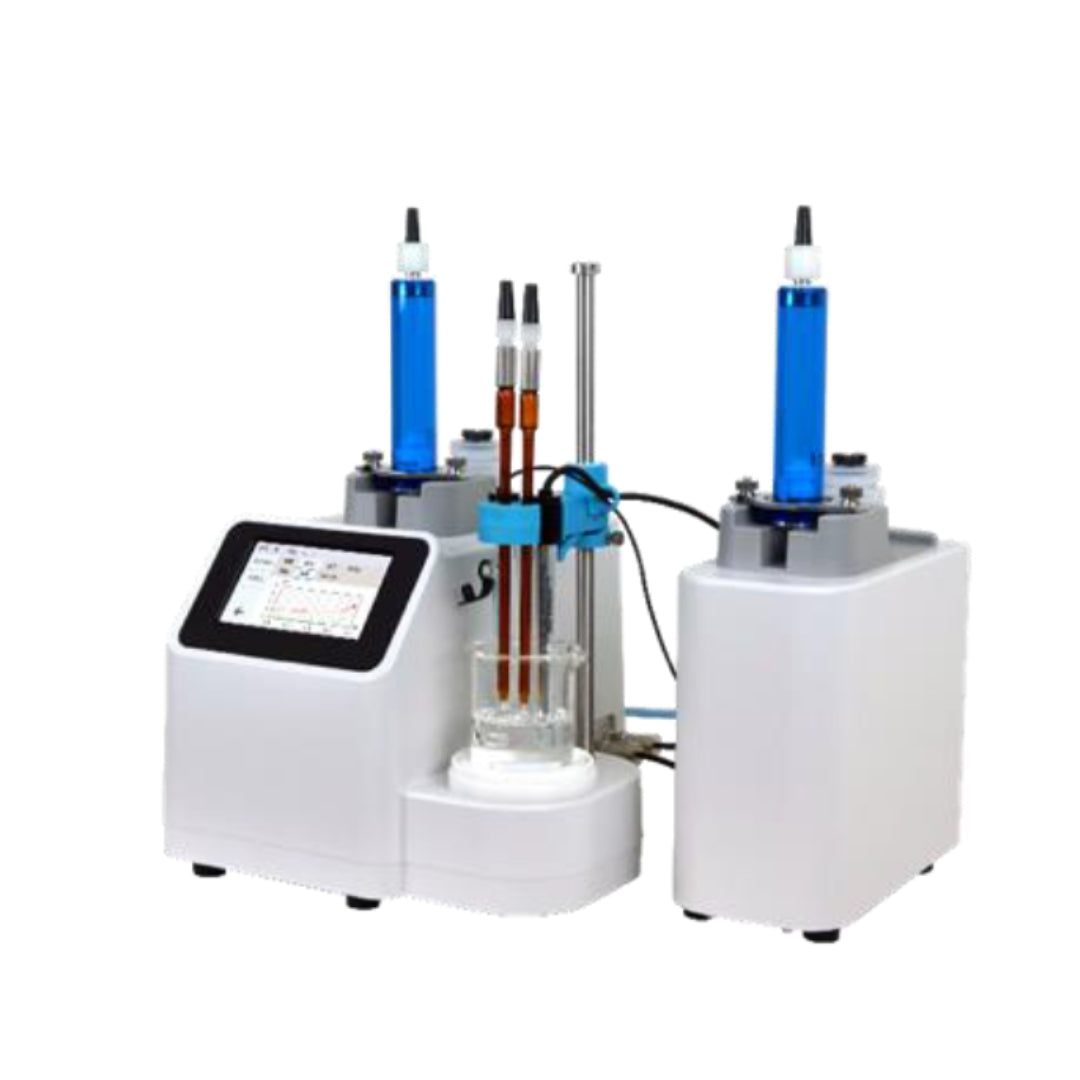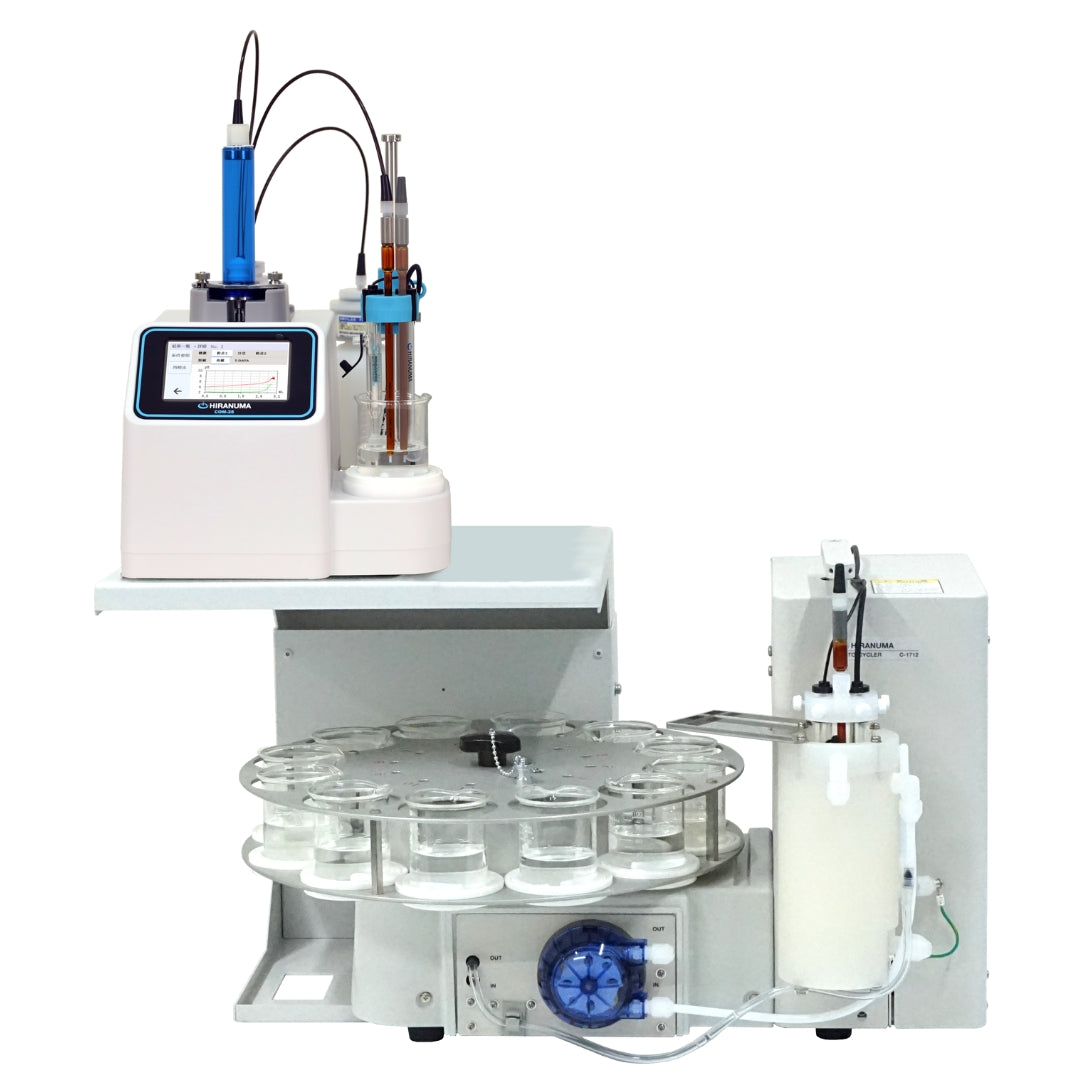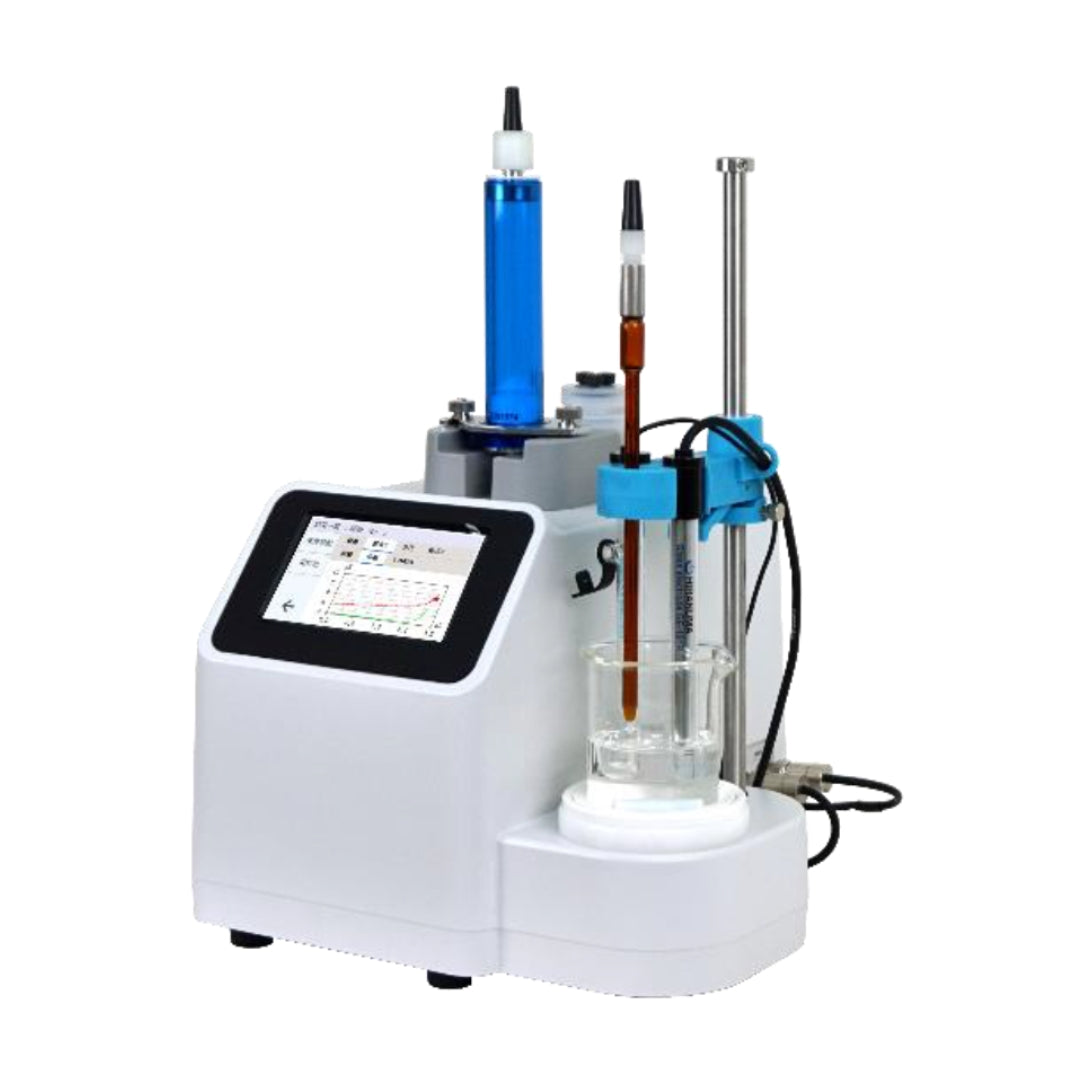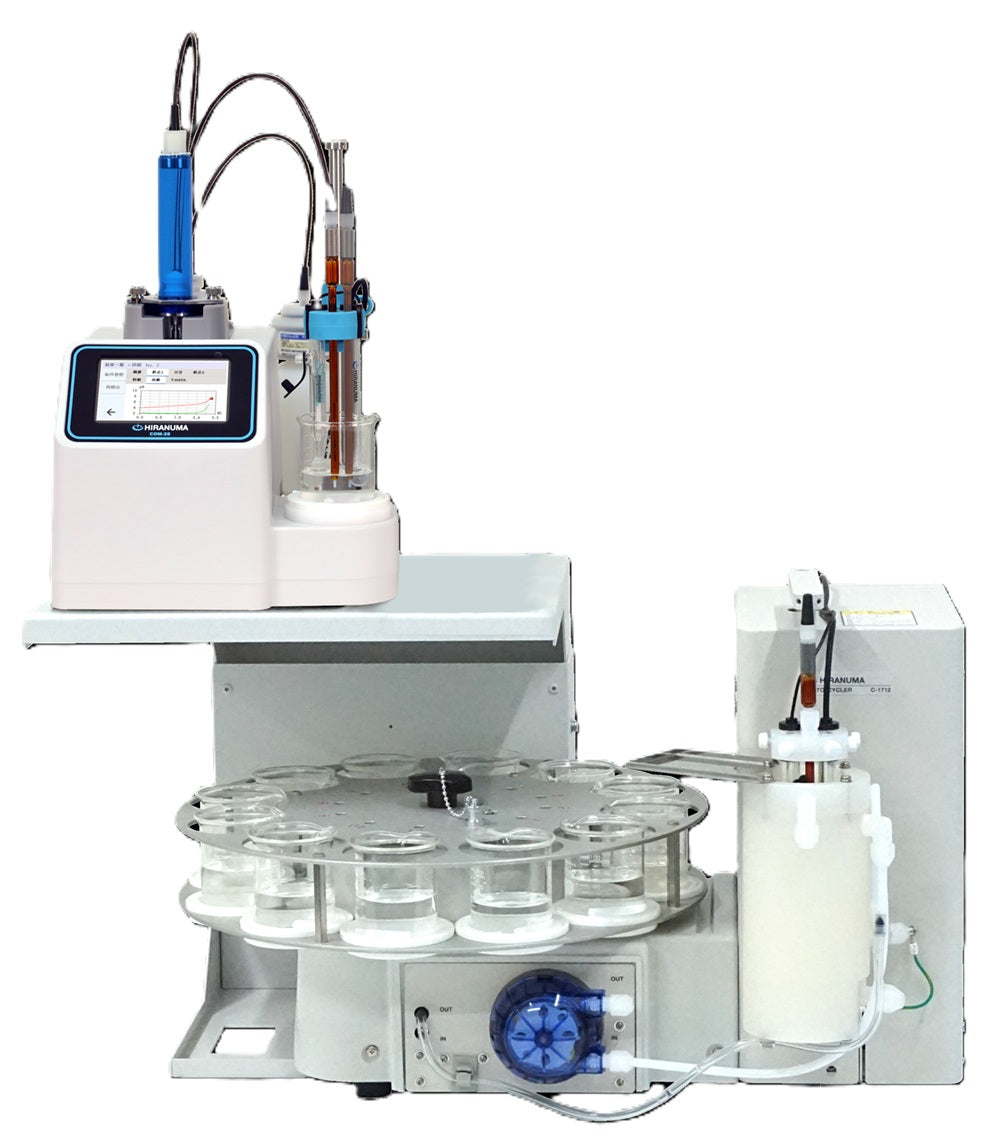| HIRANUMA APPLICATION DATA | Automatic Titrator | Data No. | M1 | Apr. 5, 2019 |
| Resins, Oils and Fats, Rubber, Adhesives, Paints | Epoxy equivalent determination of epoxy resins |
1. Abstract
Epoxy resins have competent characteristics such as chemical resistance, heat resistance, and electrical properties. They are widely used for various materials like sealant of electronic device (IC).
Epoxy resin is generic name of compounds which have two or more epoxy group in one molecule, it does not harden by itself. The addition of catalyst or hardener is required for curing. It becomes thermoset resin through addition polymerization with epoxy group by the hardener (fatty amine etc.). The additive amount of hardener corresponds to epoxy equivalent (mass of resin including one-equivalent epoxy group) of each epoxy resin. The determination of epoxy equivalent is quite important process for quality control. The measurement method of epoxy equivalent is defined in JIS (Japanese Industrial Standards) K7236:2001. Measurement is performed as follows:
1) Weigh the sample accurately and dissolve it in chloroform.
2) Add acetic acid and tetraethyl ammonium bromide – acetic acid solution.
3) Perform potentiometric titration with 0.1 mol/L perchloric acid – acetic acid standard solution.
Perchloric acid reacts with tetraethylammonium bromide and generates hydrogen bromide by addition of perchloric acid – acetic acid standard solution. (Refer to the reaction formula 1-1.)
The generated hydrogen bromide reacts with epoxy group. (Refer to the reaction formula 1-2.)
When all epoxy groups are reacted and hydrogen bromide gets excess, this point is detected as the endpoint to determine epoxy equivalent.
| (C₂H₅)₄NBr + HClO₄ → HBr + (C₂H₅)₄NClO₄ | ・・・(1-1) |
 |
・・・(1-2) |
2. Configuration of instruments and reagents
| (1) | Configuration | ||
| Main unit | : | Hiranuma Automatic Titrator COM series | |
| Electrode | : | Glass electrode GE-101B Reference electrode RE-201Z *Inner solution has to be changed to saturated sodium perchlorate in acetic acid. |
|
| (2) | Reagents | ||
| Titrant | : | 0.1 mol/L Perchloric acid –acetic acid standard solution | |
| Solvent | : | 10 mL of chloroform (can be increased up to 30 mL when sample is macromolecule.) 20 mL of acetic acid |
|
| Additive | : | Tetraethylammonium bromide in acetic acid solution 100 g of tetraethylammonium bromide is dissolved in 400 mL of acetic acid. |
3. Measurement procedure
| (1) | Take a sample with equivalent amount to 6.0×10-4 ~ 9.0×10-4 mol epoxy group into a 100 mL beaker and weigh accurately to 0.1 mg digits. *JIS K7236 describes “sample sizes are about 0.1 ~ 0.16 g for 180 ~ 190 epoxy equivalent sample, and about 0.3 ~ 0.4 g for 450 ~ 500 epoxy equivalent sample, respectively.” in the remark. |
| (2) | Add 10 mL of chloroform and dissolve sample by stirring. It could be gently heated when the sample has less solubility. In that case, cool it down to room temperature. |
| (3) | Add 20 mL of acetic acid and 10 mL of tetraethylammonium bromide solution |
| (4) | Immerse the electrodes and titrate with 0.1 mol/L perchloric acid – acetic acid standard solution. Additionally, perform the blank test with the same procedure of sample measurement. |
4. Measurement conditions and results
Examples of titration conditions
Measurement condition for blank
| Cndt No. | 1 | |
| Method | Auto | |
| Buret No. | 1 | |
| Amp No. | 1 | |
| D. Unit | mV | |
| S-Timer | 5 | sec |
| C.P. mL | 0 | mL |
| T Timer | 0 | sec |
| D.P. mL | 0 | mL |
| End Sens | 300 | |
| Over mL | 0.1 | mL |
| Max.Vol. | 1 | mL |
| ConstantNo. | 1 | |
| Size | 0 | mL |
| Blank | 0 | mL |
| Molarity | 0.1 | mol/L |
| Factor | 1.003 | |
| K | 0 | |
| L | 0 | |
| Unit | mL | |
| Formula | D | |
| Decimal Places | 3 | |
|
Auto In Pram.
|
None | |
| Mode No. | 15 | |
| Pre Int | 0 | sec |
| Del K | 0 | |
| Del Sens | 0 | mV |
| Int Time | 5 | sec |
| Int Sens | 3 | mV |
| Brt Speed | 2 | |
| Pulse | 8 | |
| 0.01 | mL |
Measurement condition for sample
| Cndt No. | 2 | |
| Method | Auto | |
| Buret No. | 1 | |
| Amp No. | 1 | |
| D. Unit | mV | |
| S-Timer | 5 | sec |
| C.P. mL | 0 | mL |
| T Timer | 0 | sec |
| D.P. mL | 0 | mL |
| End Sens | 300 | |
| Over mL | 0.3 | mL |
| Max.Vol. | 20 | mL |
| ConstantNo. | 2 | |
| Size | 0 | g |
| Blank | 0.014 | mL |
| Molarity | 0.1 | mol/L |
| Factor | 1.003 | |
| K | 1 | |
| L | 0 | |
| Unit | EE | |
| Formula | 1000*S/((D-B)*M*F*K) | |
| Decimal Places | 4 | |
|
Auto In Pram.
|
None | |
| Mode No. | 8 | |
| Pre Int | 0 | sec |
| Del K | 5 | |
| Del Sens | 0 | mV |
| Int Time | 5 | sec |
| Int Sens | 3 | mV |
| Brt Speed | 2 | |
| Pulse | 40 | |
| 0.05 | mL |
Measurement results
| Number of Measurements |
Size (g) |
Titrant volume (mL) |
Epoxy equivalent (EE) |
Statistical calculation results |
||
|---|---|---|---|---|---|---|
| Blank | 1 | – | 0.016 | – | Avg. (Blank) |
0.014 mL |
| 2 | – | 0.012 | – | |||
| Sample | 1 | 0.1207 | 6.321 | 190.8020 | Avg. | 189.51 EE |
| 2 | 0.1483 | 7.865 | 188.3280 | SD | 1.24 EE | |
| 3 | 0.1218 | 6.426 | 189.3880 | CV | 0.65 % | |
Examples of titration curves
 |
 |
| Measurement of blank | Measurement of sample |
5. Note
| (1) | Temperature correction of perchloric acid – acetic acid standard solution Acetic acid used as a solvent for perchloric acid standard solution has a relatively large thermal expansion coefficient (1.07×10-3). When the temperature of the sample measurement is different from that of factor titration, multiply the following correction value by titrant factor for the temperature correction in conformity with the formula in JIS K 7236. K = 1 – (t – t0) / 1000 … (5-1) K : Thermal expansion coefficient of titrant t0 : Temperature at titrant factor determination t : Temperature at sample titration |
| (2) | Preparation of inner solution for reference electrode The inner solution of the reference electrode RE-201Z is filled with saturated KCl aqueous solution when purchased. This inner solution have to be replaced to saturated sodium perchlorate in acetic acid solution for this measurement. Replacement procedure is described below. i) Prepare the saturated solution of sodium perchlorate in acetic acid with reagent grade of these. ii) Discharge inner solution from reference electrode RE-201Z and wash inside it with water and then acetic acid. iii) Fill the prepared inner solution into reference electrode from the supply port. iv) Leave the electrode for one day before use. |
| (3) | Influence of water contamination on titration Water contaminated in sample solution could get less sensitivity around the end point. Therefore please take care not to contaminate sample solution with water. |
| (4) | Samples with less reactivity JIS K7236:2001 describes that solid tetraethylammonium iodide or 10 % chloroform solution is recommended instead of tetraethylammonium bromide solution when sample is epoxy-containing product with less reactivity. |
| (5) | Solvent for sample According to JIS K7236:2001, chloroform is used as solvent to dissolve sample. When sample is macromolecule, the volume of chloroform can be increased up to 30 mL to dissolve sample, but the usage of other solvent is not described there. However, sometimes toluene or dioxane which readily dissolve the sample are used as solvent instead of chloroform from the aspect of sample solubility. |
| (6) | Washing of electrodes The residual resin adheres on the electrode after the measurement. Please sufficiently wash it with the solvent used for this titration. |
| Keywords: | Epoxy equivalent, Epoxy resins, JIS K7236, Perchloric acid titration, Non-aqueous titration, Tetraethylammonium bromide |
*Some measurement would not be possible depending on optional configuration of system.

